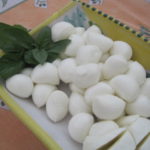 We’ve always loved mozzarella. Polly-O was the brand our grandmother served for breakfast. It was a treat that we only got when visiting her in New York as it wasn’t available in our market in Washington DC way back then. Mozzarella was the cheese of her roots in the old country and she lamented that Polly-O paled in comparison to what she grew up with. We thought it was pretty delicious and loved to play with it, pulling off strings of the cheese a little at a time. Mozzarella is the original string cheese.
We’ve always loved mozzarella. Polly-O was the brand our grandmother served for breakfast. It was a treat that we only got when visiting her in New York as it wasn’t available in our market in Washington DC way back then. Mozzarella was the cheese of her roots in the old country and she lamented that Polly-O paled in comparison to what she grew up with. We thought it was pretty delicious and loved to play with it, pulling off strings of the cheese a little at a time. Mozzarella is the original string cheese.
Even though mozzarella is now industrially made even in Italy, its roots are in the southern regions of Campania, the capital of which is Naples, and Puglia, which is the ancient, and yet somehow stylish, heel of the stiletto boot of Italy. You can still find the little neighborhood caseificio’s that make small-batch, fresh mozzarella every morning and sell it at the counter in front of the store. Made with fresh cows’ milk, mozzarella curds are melted and formed into balls or braids and kept in salted water until used. Great eaten as is, the soft, stringy cheese also melts beautifully and is delicious when eaten hot. Perfect for pizza, another delectable invention from Naples! 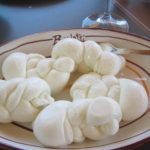
But Puglia has managed to take mozzarella to a whole new level by inventing burrata! Made by forming fresh mozzarella into a bag and stuffing it with fresh buttery curds of the same mozzarella, burrata is delicate and creamy. Fresh burrata is best enjoyed simply: a drizzle of great olive oil, a sprinkle of salt, some ripe tomatoes and a little lettuce is all you need to really enjoy it.
As a fresh cheese, mozzarella and burrata are best eaten the day they’re made. After all, they’ll make more tomorrow morning and you’ll go back down to the shop to buy it fresh. That’s what the southern Italians do: buy what they need, eat or use it that day, then go back to get what they need tomorrow. Such a luxury!
Because fresh mozzarella and burrata don’t travel well, most of what we find for sale in the US is made domestically. It’s not bad. Some of it is quite decent and delectable, in its own way. Some of it, like the low fat/part skim plastic-packaged variety is quite bad to eat on its own but passes muster when melted on a pizza. And the “homemade” or “house made” mozzarella you see in specialty stores and restaurants isn’t really any better. You too can purchase industrially made curd and melt it on the stovetop to come up with “fresh mozzarella”.
There is nothing like the artisan mozzarella and burrata we eat when we visit the small, family-owned caseificio’s on our tours to Puglia and Campania! There is something viscerally satisfying when you bite into a ball of fresh mozzarella, and milk, not water, drips out from the fresh curds.
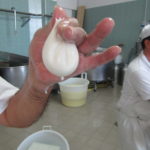
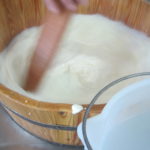
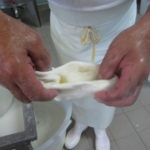
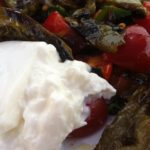

Leave a Reply